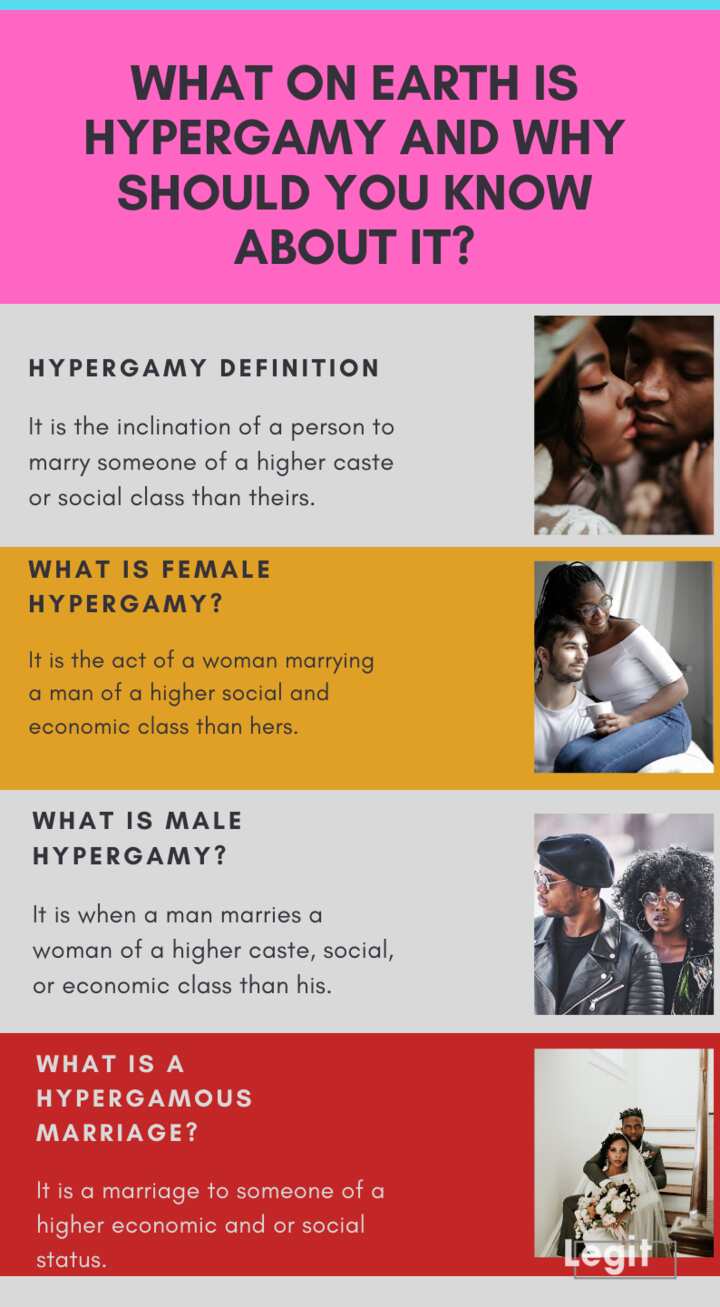Hypergamy is a term that evokes a wide range of emotions and discussions, especially in the context of relationships and social dynamics. The concept revolves around the idea of seeking a partner of higher socioeconomic status or social standing, which can often lead to debates regarding its implications in modern society. As we explore the hypergamy definition, we uncover not only its linguistic roots but also its psychological and sociocultural dimensions. This article aims to provide a comprehensive understanding of hypergamy while addressing common questions and misconceptions surrounding the term.
In today's world, where relationship dynamics are constantly evolving, it is essential to understand the motivations behind hypergamous behavior. Many individuals, particularly women, have historically been viewed as more likely to engage in hypergamous relationships, seeking partners who can provide stability, security, and social elevation. However, the reality is more complex, and hypergamy can manifest in various ways across different cultures and social strata. By dissecting the hypergamy definition, we can gain insights into its role in contemporary relationships and societal norms.
As we proceed further, we will delve into the intricacies of hypergamy, exploring its definition, historical context, and the factors that contribute to its prevalence. We will also address common questions, providing clarity on the concept while encouraging a nuanced understanding of human relationships and aspirations.
What is the Hypergamy Definition?
Hypergamy is defined as the act or practice of seeking a partner of higher socioeconomic status or social standing than oneself. This phenomenon is often discussed in the context of romantic relationships, where individuals, particularly women, are perceived to pursue partners who can offer better financial stability, social status, or overall security. The term derives from the Greek words "hyper," meaning over or above, and "gamos," meaning marriage.
How Does Hypergamy Manifest in Different Cultures?
The manifestation of hypergamy can vary significantly across cultures. In some societies, hypergamous relationships are encouraged and celebrated, while in others, they may be frowned upon. For instance:
- In traditional societies, women may be socialized to seek partners with greater wealth or status as a means of ensuring their future security.
- In more egalitarian societies, individuals may prioritize compatibility and shared values over socioeconomic status.
- Modern dating apps have also changed the landscape, allowing individuals to seek partners based on a wider range of criteria, including status and resources.
What Are the Psychological Factors Behind Hypergamy?
Understanding the psychological factors that drive hypergamous behavior can shed light on why individuals may seek partners of higher status. Some key factors include:
- Security and Stability: Many individuals seek partners who can provide financial security and stability, especially in uncertain economic times.
- Social Validation: Being with a partner of higher status can enhance one's social standing and provide validation within social circles.
- Evolutionary Psychology: Some theories suggest that hypergamy may be rooted in evolutionary psychology, where individuals seek mates who can provide resources for offspring.
Is Hypergamy a Modern Phenomenon?
While hypergamy is often discussed in the context of modern dating, it is not a new phenomenon. Historical accounts reveal that hypergamous relationships have existed for centuries, often tied to social, economic, and political factors. However, the rise of individualism and changing gender roles in contemporary society has led to a shift in how hypergamy is perceived and practiced.
What Are the Potential Consequences of Hypergamy?
Engaging in hypergamous relationships can have both positive and negative consequences. Some potential outcomes include:
- Empowerment: For some, hypergamy can represent a form of empowerment, allowing individuals to elevate their social standing.
- Social Pressure: The pursuit of hypergamous relationships can create social pressure, leading individuals to prioritize status over genuine connection.
- Relationship Dynamics: Hypergamous relationships may experience unique dynamics, including power imbalances and expectations regarding financial contributions.
How Do Modern Dating Practices Influence Hypergamy?
Modern dating practices, particularly the use of dating apps, have significantly influenced hypergamy. Individuals can now filter potential partners based on various criteria, including income and education level. This has made it easier for people to pursue hypergamous relationships while also raising questions about authenticity and compatibility.
What Can We Learn from the Hypergamy Definition?
The hypergamy definition offers valuable insights into human relationships, motivations, and societal dynamics. By understanding hypergamy, individuals can navigate their own relationship preferences and expectations more effectively. It also encourages a broader dialogue about the factors that influence partner selection and the evolving nature of romantic relationships.
Conclusion: Hypergamy in a Changing World
In conclusion, hypergamy is a multifaceted concept that reflects the interplay between personal aspirations, societal expectations, and cultural norms. As we continue to navigate a changing world, understanding the hypergamy definition will empower individuals to make informed choices in their relationships while fostering a more nuanced perspective on love and partnership.


